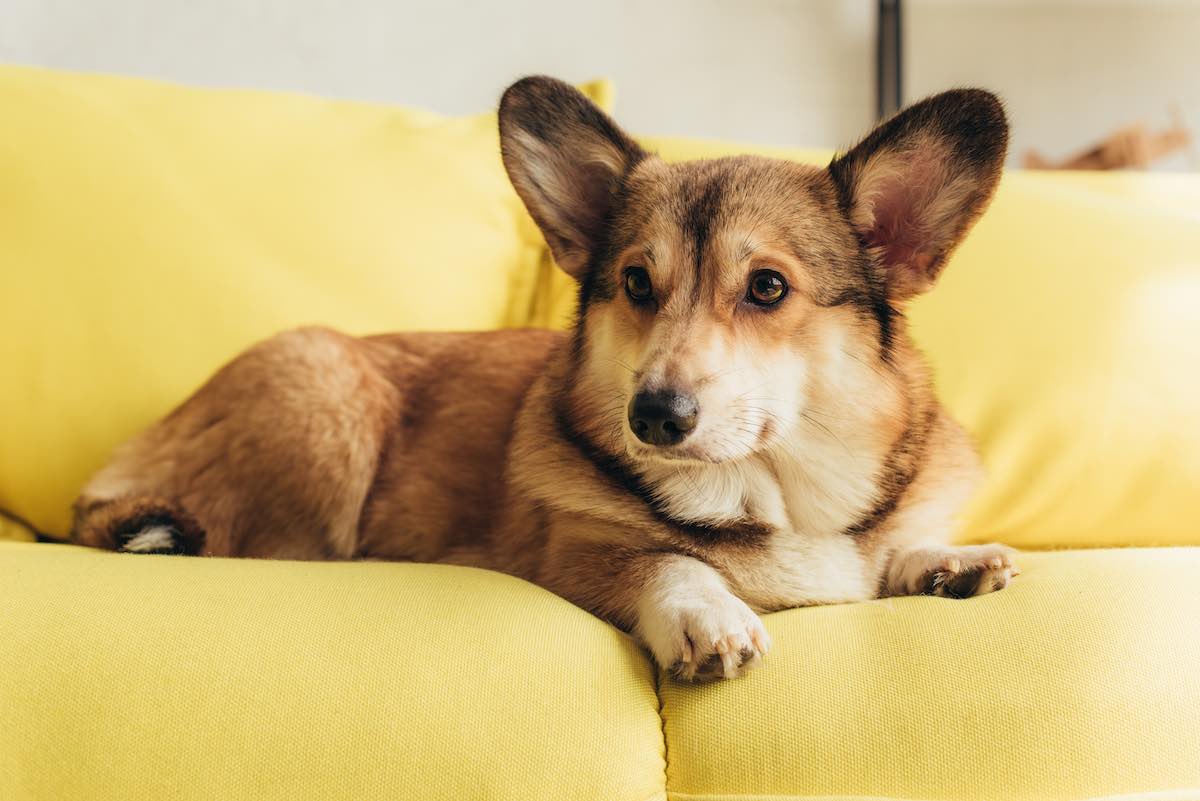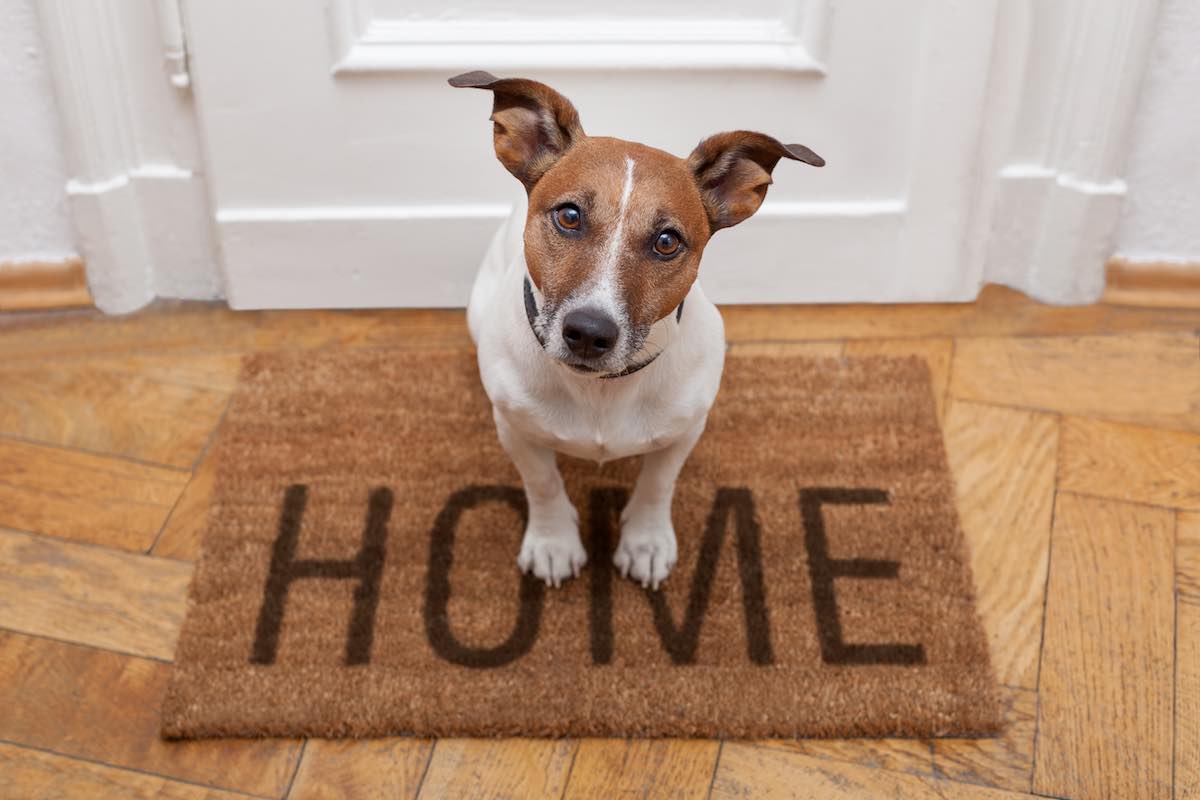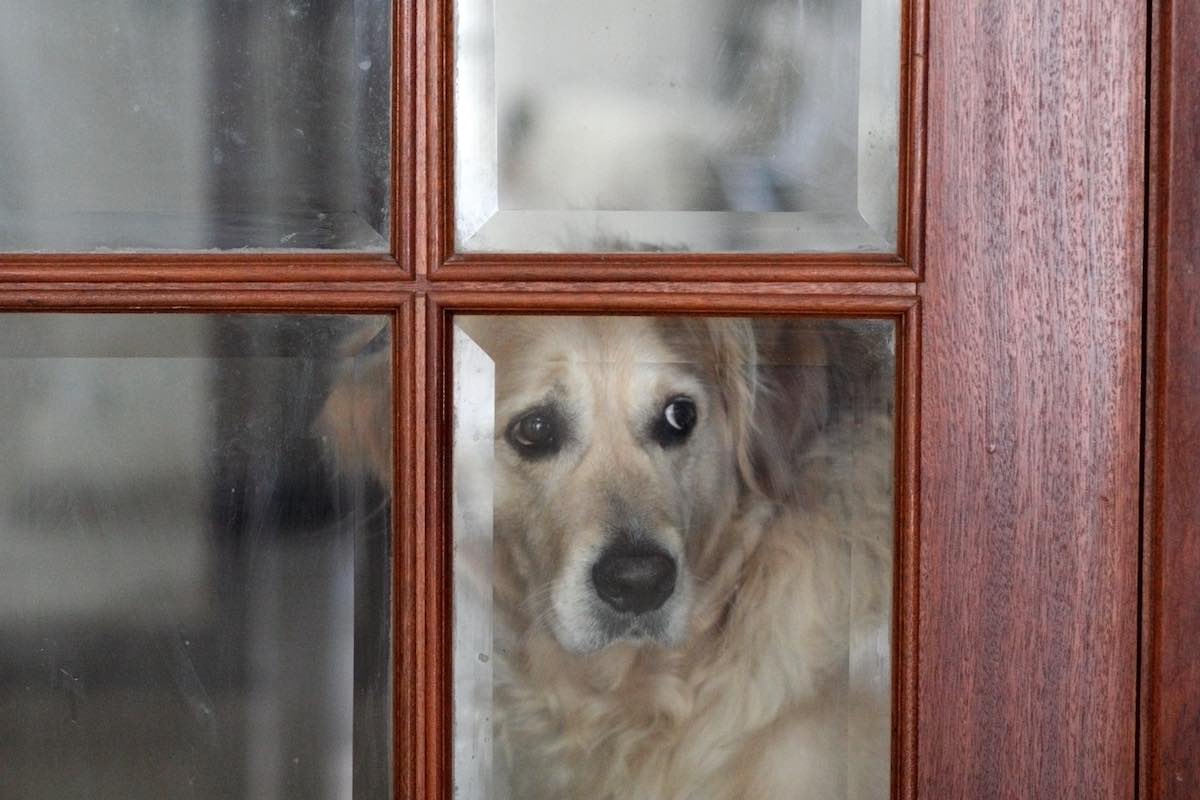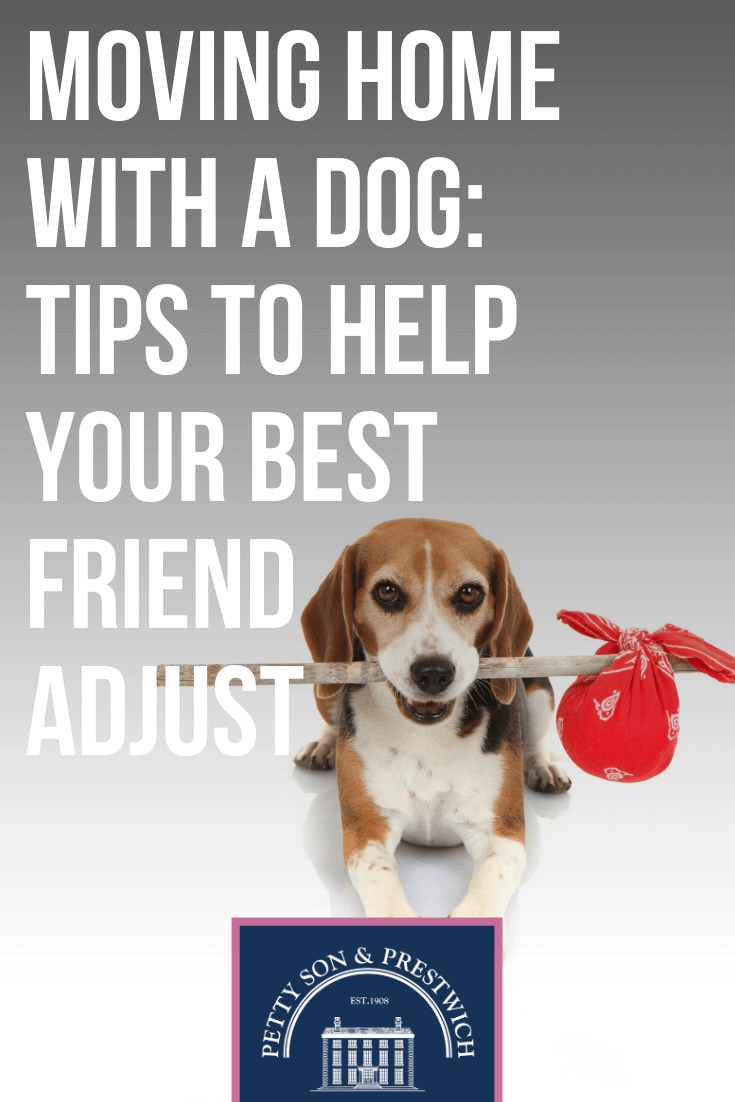The whole ‘Moving home is stressful’ thing is somewhat cliché, but imagine all of your common surroundings suddenly changing without having the mental capability or foresight to prepare yourself beforehand!
Welcome to your dog’s world.
Moving home with a dog in tow adds an extra element to an already trying time, but that doesn’t necessarily mean it has to be difficult. As many of you know, we’re big fans of all things furry here at Petty’s (check out the hashtag #pettyspets on social if you need convincing), so we thought we’d put together a post that’ll help both you and your hound move home.
Before the move

Now’s the time to get things like paperwork in order. This will help take the pressure off of you, which your dog will pick up on, and it’ll afford you more time to spend with your prized pooch post move.
So, what do you need to concentrate on? Well, the obvious ones are updating pet insurance, vet details, emergency contacts, getting new ID tags made, and updating your pal’s microchip details.
Something else to consider, though, is getting an early repeat of your dog’s prescription, if they have one. Getting that out of the way now will save you hassle later on, and ensure that your best friend has their medication in place and ready for once you’ve moved home.
Making moving day easy on your dog
There’s no getting away from it: moving day is hectic. Most dogs will react in one way or another to the raised activity levels and any tension they feel emanating from you and the rest of your family.
With this in mind, the best course of action by far is to leave them with someone they know and trust. This could be a family friend or relative, but it should always be someone they feel comfortable with. This, however, isn’t always possible.
If you don’t have access to a kindly pooch pamperer who’s willing to take care of your dog while you move, confining them is the next best option. It may sound horrible, but it’s the best thing for them. Put them in a suitable room and make sure all doors and windows are closed...especially if they have a touch of Houdini about them.
Naturally, you’ll want to ensure their creature comforts are in the room as well, so make things like their bed and toys easily accessible. Let the removal people know which room of the house your dog’s in, too. That’ll go a long way toward preventing any unnecessary stress and/or breakouts.
You should also give a member of the family the job of being chief dog watcher, keeping an eye on them and important stuff like their food and water (however, try not to feed your dog just before the journey, for obvious reasons!). That way, you can make one person responsible and you’ll know the dog’s welfare is in good hands.
Now that you know where your dog is, that they’re safe, and have someone watching over them, you can get on with the business of packing up and moving out. Here’s a post covering the 6 stages of a stress-free move and another if you’re moving home with children as well.
Good luck!
The journey
As a responsible dog owner, you’ll already be aware of the rules regarding travelling with a dog. On moving day, however, you’d do well to remind yourself that nothing has changed in terms of keeping your dog safe, and you should adhere to the same standards you’d apply every other day of the year:
- Always transport your dog safely, preferably in a purpose built dog cage secured to the car.
- If not, always apply a specific dog car harness to the rear back seat, one which allows your hound to stand, sit, and lie down, but not move around the car.
- Never allow you dog to travel loose in the car.
- Provide adequate breaks if the journey is long, giving your dog water and walks where necessary.
- Never leave your dog in an unattended car with the windows up.
- If you absolutely do need to stop and leave your dog in the car, keep it short, leave the windows open a crack, and park in the shade. Do leave dogs unattended in a car as a matter of course, though, and definitely not for any length of time.
Try wherever possible to feed your dog on arrival rather than prior to the journey. If you do need to feed your dog beforehand, make sure you leave an adequate gap to allow your dog time to digest their meal properly before travelling.
Preventing behavioral problems after moving home

The sudden change in environment can send even the best behaved dog a little bit wonky, but most behavioral problems can be avoided with a few simple preventative measures once you’ve moved home:
- Don’t change everything: As tempting as it may be to treat your dog to a load of new stuff when you move home, they’ll likely not appreciate the thought. Keeping their old bed and toys, at least initially, is a much better option and will help them settle in faster.
- Routine, routine, routine: Same goes with routines: don’t change them when you change your address! Keep feed and walk times the same as they were before you moved home. Patterns, too, are important, so keep the sequence of your dog’s life the same as well.
- Play indoors: This one is easy...and enjoyable! Spend a lot of time playing with your dog indoors, especially games where you get down to their level. Doing so will reassure your dog in a number of ways, not least of which is the fact that by playing on the floor you’re leaving familiar scent trails behind. Important and comforting stuff!
- Be mindful of leaving: Obviously, there’s going to come a time when you’ll need to leave your dog home alone, but you need to be mindful of your dog’s sensitive nature before you do. Try and wait as long as possible before going out without them and leave lots of familiar items lying around for them to find. It might just save your sofa!
- Spread the love: Another easy one: give that doggie more love than they’ve ever had before. It can be easy to get caught up with all the to-dos when moving home, but remember that ol’ Rover is a living being with feelings: they’re going to need your attention a lot to help them settle. Make sure you provide them with it in the form of plenty of stroking, grooming, walks, talks, and generally being together.
Know the signs of an unhappy dog

It goes without saying that you’ll want everything to go smoothly, and if you follow the above advice you’ll be well on your way to moving home successfully with your dog.
It also goes without saying that you know your dog better than anyone else, but there are a few telltale signs all dog owners should keep an eye out for directly after moving home. Spotting signs of distress early is important, as it can help prevent problems escalating.
Here are a few things to look out for:
- Excessive grooming and/or paw licking
- Sleeping more than usual
- Change in appetite: both increased and decreased
- Avoiding owner’s attention
- Moving slowly
- Lack of interest in walks or playing
Thankfully, most of these will be temporary issues, but being aware of them is the first step towards getting your dog back to normal quickly after you’ve moved. Should you spot any of the above in your dog after moving home, don’t panic. Just up the attention levels you’re giving them and try to reassure them at every turn.
If things don’t improve, or actually appear to be getting worse, schedule an appointment with your vet ASAP.
That’s it for this post. If you have any questions about buying a new place to live or selling your old home, give us a call. We’ve been helping people like you, and their dogs, move successfully for over a century and would love to help you next.
